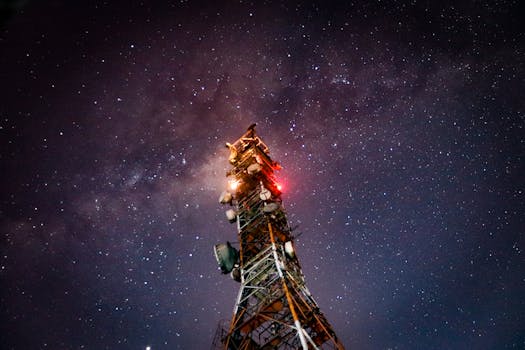
MEO Satellites: Revolutionizing Global Connectivity with Medium Earth Orbit Technology
MEO satellites, or Medium Earth Orbit satellites, are a type of satellite that operates in an orbital altitude of approximately 2,000 to 36,000 kilometers above the Earth’s surface. This range allows MEO satellites to provide a unique combination of global coverage, high bandwidth, and low latency, making them an attractive solution for a wide range of applications, including telecommunications, navigation, and Earth observation.
MEO satellites are designed to fill the gap between Geostationary Orbit (GEO) satellites, which are located at an altitude of approximately 36,000 kilometers, and Low Earth Orbit (LEO) satellites, which operate at an altitude of around 160 to 2,000 kilometers. While GEO satellites offer a wide range of benefits, including high availability and large coverage areas, they are often limited by their high latency and limited bandwidth. LEO satellites, on the other hand, offer lower latency and higher bandwidth, but their limited coverage area and short orbital lifetime make them less suitable for many applications.
The Benefits of MEO Satellites
MEO satellites offer a number of benefits that make them an attractive solution for a wide range of applications. One of the primary advantages of MEO satellites is their ability to provide global coverage with a relatively small number of satellites. This is because MEO satellites can see a significant portion of the Earth’s surface from their orbital altitude, allowing them to provide coverage to a large area with a single satellite. Additionally, MEO satellites can offer higher bandwidth and lower latency than GEO satellites, making them well-suited for applications that require high-speed data transfer, such as telecommunications and video streaming.
Another benefit of MEO satellites is their flexibility. Because they operate in a lower orbital altitude than GEO satellites, MEO satellites can be launched into orbit using smaller and less expensive launch vehicles. This makes them a more affordable option for many applications, and also allows them to be launched more quickly and easily than GEO satellites. Additionally, MEO satellites can be designed to operate in a variety of different frequencies, including Ka-band, Ku-band, and C-band, making them suitable for a wide range of applications.
Applications of MEO Satellites
MEO satellites have a wide range of applications, including telecommunications, navigation, and Earth observation. In the telecommunications sector, MEO satellites can be used to provide high-speed internet access, voice communications, and video streaming to remote or underserved areas. They can also be used to provide backup connectivity in the event of a network outage or disaster.
In the navigation sector, MEO satellites can be used to provide location information and timing signals to a wide range of users, including aviation, maritime, and land-based applications. They can also be used to provide augmentation signals to improve the accuracy and reliability of GPS and other navigation systems.
In the Earth observation sector, MEO satellites can be used to collect data on the Earth’s surface and atmosphere, including weather patterns, ocean currents, and land use. They can also be used to monitor the Earth’s climate and provide early warning systems for natural disasters such as hurricanes, wildfires, and floods.
Challenges and Limitations of MEO Satellites
While MEO satellites offer a number of benefits, they also have several challenges and limitations. One of the primary challenges of MEO satellites is their limited orbital lifetime, which can range from 5 to 15 years depending on the specific application and orbital altitude. This means that MEO satellites must be replaced regularly, which can be expensive and logistically challenging.
Another challenge of MEO satellites is their vulnerability to interference and jamming. Because they operate in a lower orbital altitude than GEO satellites, MEO satellites are more susceptible to interference from terrestrial sources, such as radar and communication systems. They are also more vulnerable to jamming, which can be used to disrupt their signals and interfere with their operation.
Finally, MEO satellites are also subject to a number of regulatory and standards challenges. Because they operate in a global environment, MEO satellites must comply with a wide range of regulatory requirements and standards, including those related to frequency allocation, orbital slots, and interference protection. This can be complex and time-consuming, and requires careful planning and coordination to ensure compliance.
In conclusion, MEO satellites are a revolutionary technology that is transforming the way we communicate globally. With their unique combination of global coverage, high bandwidth, and low latency, MEO satellites are well-suited for a wide range of applications, including telecommunications, navigation, and Earth observation. While they have several challenges and limitations, the benefits of MEO satellites make them an attractive solution for many users, and they are likely to play an increasingly important role in the future of global connectivity.